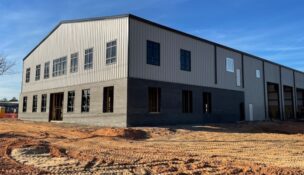Homebuilders meeting buyers where they shop: online
Staff //December 6, 2019//
Just like a telephone number was once required, anyone in business today knows a website is a necessity. That reality is becoming clear to homebuilders, who say potential buyers often begin looking for their new home online.
Internet buyers represent as much as 30% of new home purchasers, real estate technology tracker Inman reports, and millennials are willing to submit purchase offers and pay deposits online. A generation that was born with smartphones in hand goes online for everything, and businesses are finding they must meet their customers in cyberspace.
“Look at the i-buyer as the CarMax for homeownership,” said Hanley Wood Meyers Research CEO Jeff Meyers, referencing the online automotive shopping platform.
Online home shoppers demand 24-hour virtual access to model homes from the comfort of their sofas or convenience of their smartphones. Listing sites such as opendoor.com provide such services.
“It’s really efficient,” Meyers said. “Most homebuilders today have model homes open between 10 a.m. and 5 p.m. when everyone works — not the best time to be looking for homes.”
A study by Avid Ratings found 80% of smartphone users research purchases on their phones, while 45% read reviews before making a purchase. The higher the price of an item, the more research smartphone users do.
Avid Ratings said millennials represent 42% of today’s active homebuyers, Generation X has 26% of the market and Baby Boomers are 24% of active purchasers.
“The marketing trail starts long before they pick up our first collateral piece or before they visit our sales center or our model homes, so knowing how to navigate that with these new consumers is so critical today,” said Tim Bailey, Canada division president for Avid Ratings.
New-home construction sellers have to target potential buyers where they shop — online — or risk losing them to an existing home purchase in which they can see what they want. Bailey said 90% of residential real estate purchases are now resales, when new home construction was once more than 20% of the market.
“Over the next 10 years, we’ll see significant change in how we transact homes, how we build our houses and how we deal with the buyer,” he said.
Online listings also need to feature easily accessible, detailed information, experts say. A single page with bullet points of features, a picture of an architect’s rendering and a floor plan won’t sell an $800,000 house.
“You have to supply them with content that’s worthy of your brand,” said Tim Costello, CEO of BDX, a digital marketing company for homebuilders.
Costello cited an example of a blender listed on Amazon, where consumers can browse price, product features, color options and accessories while also seeing the number of products available and a side-by-side comparison of similar models. Hundreds of customer reviews, some of which may include videos of the product in use, are also at customers’ fingertips.
He said homebuilders need to take note and follow suit.
“What we do in our industry is we basically lead with a plan view, and we call that plan view something very uninspiring like ‘24-B.’ And then we follow with black-and-white floor plans and a very dull and clinical description,” Costello said. “Most of the descriptions in our industry, in the new home side, simply are an inventory of what is in the home.”
Industry experts say potential buyers want more from online listings. They want multiple photos, interactive floor plans, 3D walk-throughs, virtual reality tours and the ability to alter features such as countertops or paint colors. They also want real-time information on available homes, lots, prices and options.
“They stop looking for a new home because they can’t visualize their kitchen,” Costello said. “Your model home is all white and they wanted a cherry and black-granite kitchen, and they just can’t quite understand what that would look like, and they fear it so much they go buy a used home that already has cherry cabinets and black granite.”
Builders say an advantage new construction has is that potential buyers can customize features and that rendering technology can help potential buyers see their options and create interactive models of an entire housing community.
“That’s what makes us different from the used market,” said Costello. “They (buyers) have a harder time understanding that when they only see one picture of a kitchen. So we need to show them that there’s actually three or four very different kitchen configurations that you can have with the same home. This is the kind of concept that we need to provide them and inspire them.”
Bailey suggested that builders encourage customer feedback and establish relationships with potential buyers. Even if a builder doesn’t have what a customer is looking for, that customer may come back if they have a good experience with the company, he said.
“Shoppers today … are typically shortlisting companies before they come up to visit them,” he said. “They’re starting online long before they’re interacting with any human component.”
This story originally appeared in the Dec. 2, 2019, print edition of the Columbia Regional Business Report.
F















